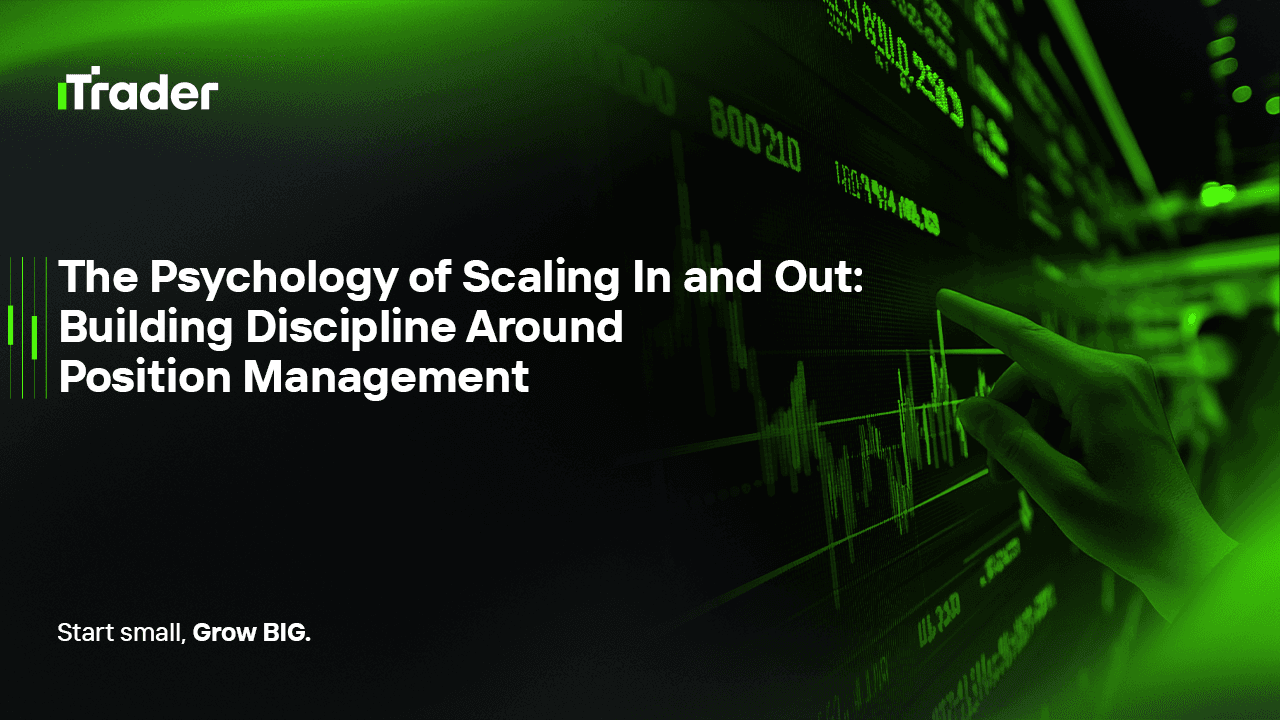2025-09-23
Ask any trader what matters most, and many will say “finding the perfect entry.” But if you’ve been trading forex long enough, you know the truth: the entry is only the beginning. The real battle starts after you’re in the trade.
This is where position management comes in. It’s the art—and discipline—of adjusting your exposure as the trade unfolds. Do you add more when the market is moving in your favor? Do you reduce size to protect profits? Or do you freeze, second-guess, and end up turning a good trade into a missed opportunity?

The answers lie in how well you apply two powerful techniques: scaling in and scaling out. Done right, they can transform your equity curve. Done wrong, they can sabotage even the best setups.
Let’s break them down, not just technically, but from the psychological perspective that often separates winning traders from inconsistent ones.
At its core, position management is about controlling your size, risk, and profit distribution as the market evolves.
Sounds simple, right? The reality is far from it. The mechanics are easy—the psychology is not. That’s why so many traders either misuse these tools or avoid them altogether.
Scaling in is about pressing your advantage. Instead of throwing all your capital in at once, you start small, and only increase size when the trade proves itself.
For example:
Greed creeps in fast here. Many traders confuse scaling in with averaging down—adding to losers in the hope of recovery. That’s not scaling in; that’s gambling. True scaling in happens only when you’re already ahead.
Another common pitfall: over-adding. A trade moves slightly in your favor and you pile in aggressively, only to get shaken out by a minor pullback. Discipline is what keeps scaling in a weapon, not a liability.
Scaling out is about reducing exposure as the trade matures. Instead of closing everything too early or holding everything too long, you strike a balance.
Example:
The danger with scaling out is doing it too early. If you close half the position for peanuts, you rob yourself of the trade’s true potential. On the flip side, refusing to scale out at all can mean watching a winning trade reverse and wipe out your gains.
The skill lies in defining clear rules: when, how much, and under what conditions to scale out. Without that framework, emotions take over.
The technical rules are easy to write down. The execution is another story.
Here’s what tends to go wrong:
To counter this, you need structure:
A trader buys EUR/USD with 1 lot, stop 50 pips. After +50 pips in profit, they add 0.5 lot. At +100 pips, they close the initial 1 lot, trail the remaining 0.5 lot, and secure a total of +3R.
The key? They only added after confirmation and managed risk carefully.
Another trader buys 1 lot. The trade drops 40 pips against them. Instead of taking the stop, they add another 1 lot to “average down.” When the stop hits, the loss is double what they planned.
That’s not position management—it’s emotional trading disguised as strategy.
Here’s how to bring discipline to scaling in and out:
Trading is a probability game. A single trade means nothing. What matters is how your equity curve looks after 100, 200, or 500 trades.
Scaling in and out, applied with discipline, smooths that equity curve. It reduces volatility in your results, protects you from emotional swings, and lets you compound gains more effectively.
The traders who succeed aren’t the ones who catch one big move—they’re the ones who stay in the game long enough for their edge to play out. Position management is what keeps you in the game.
Scaling in and scaling out are more than just trade management tactics. They are mirrors that reveal your psychology.
With clear rules and discipline, these tools transform you from reacting emotionally to trading with intent. They don’t just help you manage positions—they help you manage yourself.
That’s the real edge.
© 2025 iTrader Global Limited|会社登録番号:15962
iTrader Global Limitedは、コモロ連合のアンジュアン自治島ムツァムドゥのHamchakoに所在し、コモロ証券委員会によって認可・規制を受けています。ライセンス番号は L15962/ITGL です。
iTrader Global Limitedは「iTrader」の商号で運営しており、外国為替取引業務を行う許可を受けています。会社のロゴ、商標、ウェブサイトはすべて iTrader Global Limited の専有財産です。
iTrader Global Limitedの他の子会社には、iTrader Global Pty Ltd(オーストラリア会社登録番号(ACN):686 857 198)が含まれます。 この会社は、Opheleo Holdings Pty Ltd(オーストラリア金融サービスライセンス(AFSL)番号:000224485)の認可を受けた代表者(AFS代表番号:001315037)です。登録住所は Level 1, 256 Rundle St, Adelaide, SA 5000 です。
免責事項: この法人は、本ウェブサイト上で取引される金融商品の発行者ではなく、それらに対して責任を負いません。
リスク警告: 差金決済取引(CFD)は、レバレッジにより資本の急速な損失リスクが高く、すべての利用者に適しているとは限りません。
ファンド、CFD、その他の高レバレッジ商品を取引するには、専門的な知識が必要です。
調査によると、84.01%のレバレッジ取引者が損失を被っています。取引を開始する前に、リスクを十分に理解し、資金を失う可能性があることを認識してください。
iTraderは、レバレッジ取引によるリスク、損失、またはその他の損害について、個人または法人に対して一切の責任を負わないことを明言します。
利用制限: iTraderは、法律、規制、または政策によりこのような活動が禁止されている国の居住者を対象として、本ウェブサイトやサービスを提供していません。